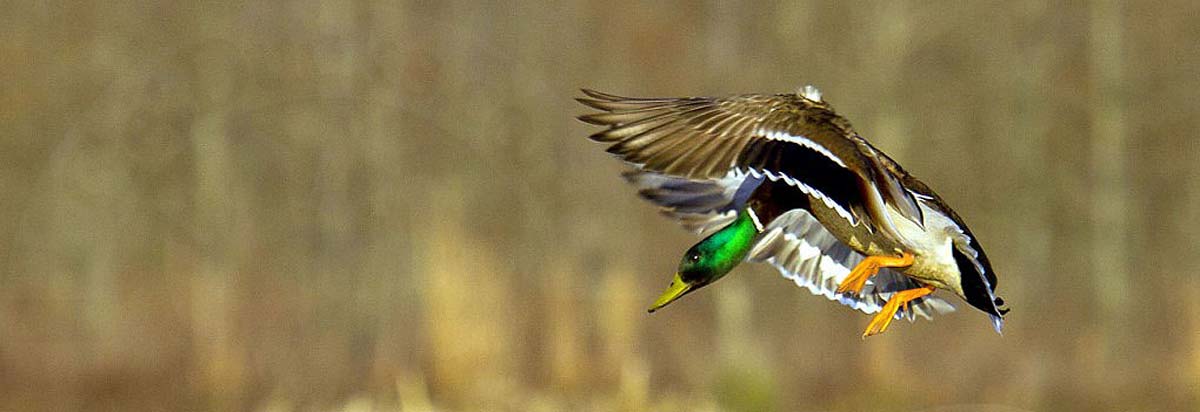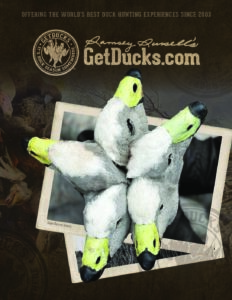Netta a Dull Moment: Are The Rosy-bills In?
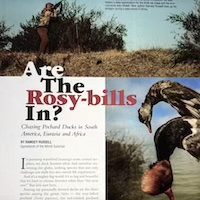 In pursuing waterfowl hunting’s most coveted trophies, we duck hunters often find ourselves traversing the globe, seeking species that not only challenge our skills but also enrich life experiences. And it’s a mighty big world. It’s so big and beautiful that it’s hard to choose favorites other than “the next one!” But let’s start here. Among my personally favored ducks, the 3 species among the genus Netta—the rosy-billed pochard (Netta peposaca), the red-crested pochard (Netta rufina), and the southern pochard (Netta erythrophthalma)—stand out. Here’s why.
In pursuing waterfowl hunting’s most coveted trophies, we duck hunters often find ourselves traversing the globe, seeking species that not only challenge our skills but also enrich life experiences. And it’s a mighty big world. It’s so big and beautiful that it’s hard to choose favorites other than “the next one!” But let’s start here. Among my personally favored ducks, the 3 species among the genus Netta—the rosy-billed pochard (Netta peposaca), the red-crested pochard (Netta rufina), and the southern pochard (Netta erythrophthalma)—stand out. Here’s why.
Read Full Story: Are The Rosy-bills In?
These ducks are classified as divers, meaning they feed by diving under the water’s surface instead of dabbling from the surface, and as part of the tribe Aythini, are referred to as pochards. But I’ve also heard them described as “false divers,” because unlike more familiar diving ducks—think their Athya cousins, canvasbacks and scaup—the 3 Netta species prefer feeding on aquatic vegetation and invertebrates in shallower, freshwater wetlands. Which makes them pretty much perfectly suited to us rather-stand-in-knee-deep-water-in-our-waders duck hunters hailing from the Deep South or elsewhere.
Though found in 3 separate corners of the world and appearing as distinctly different as Fords, Chevys, and Dodge trucks, comparable habitats and diet preferences aren’t the only similarities. Drakes have red eyes. Distinct white speculums are visibly seen as strong white contrast stripes while in flight such that despite their obvious differences, if you’ve seen one bank over the water you’ve figuratively seen them all. Their vocalizations are coarse trills and growling into calls oftentimes coaxes them over the decoys. Which reminds me that they’re strong, fast, surprisingly agile fliers, too, which can be pretty damned humbling.
Rosy-Billed Pochard: South America’s Crown Jewel
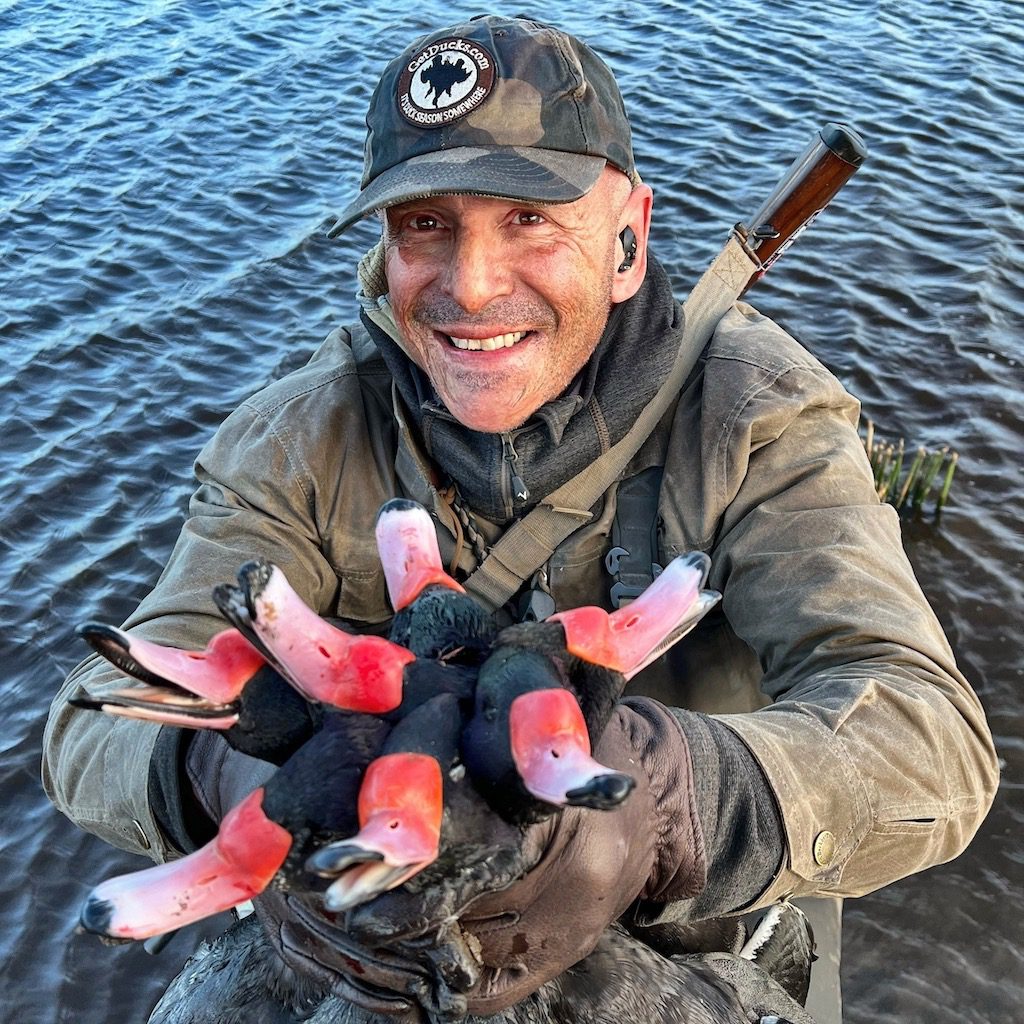 The rosy-billed pochard is a striking duck native to South America. Males are easily identifiable by their glossy black plumage contrasted with gray sides and a distinctively bright, sometimes visible-as-a-hot-ember red bill adorned with a prominent knob. Females, in contrast, display more subdued brown tones, allowing them to blend seamlessly into their wetland habitats. These birds are predominantly hunted in Argentina and Uruguay, favoring freshwater swamps, marshes, and small lakes abundant with tall grasses. While there’s no real continental waterfowl migration south of the equator, during the austral winter, hungry rosy-bill flocks disperse widely in search of fresh water and food.
The rosy-billed pochard is a striking duck native to South America. Males are easily identifiable by their glossy black plumage contrasted with gray sides and a distinctively bright, sometimes visible-as-a-hot-ember red bill adorned with a prominent knob. Females, in contrast, display more subdued brown tones, allowing them to blend seamlessly into their wetland habitats. These birds are predominantly hunted in Argentina and Uruguay, favoring freshwater swamps, marshes, and small lakes abundant with tall grasses. While there’s no real continental waterfowl migration south of the equator, during the austral winter, hungry rosy-bill flocks disperse widely in search of fresh water and food.
Hunting rosybills in Argentina offers an unparalleled experience. The country’s vast wetlands become a stage for dramatic flights of these ducks, often seen in flocks numbering hundreds throughout the morning. Their gregarious nature, predictable flight patterns, and mallard-like response to calls and decoys provide hunters with both challenges and rewards, making the pursuit of rosybills a highlight in South American waterfowling adventures. So much so that while there’s about a baker’s dozen worth of Argentina waterfowl species available there, the first question asked by most of us died-in-the-wool duck hunters in Argentina on arrival is simply, “Are the rosy-bills in?”
Red-Crested Pochard: Eurasia’s Elegant Diver
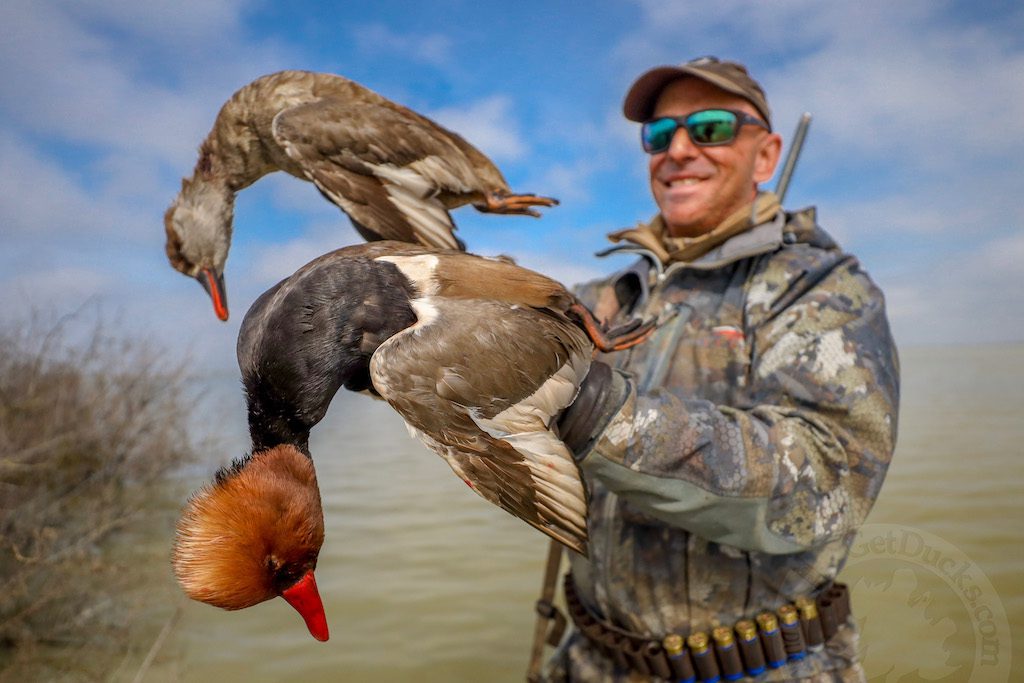 Venturing into Eurasia, the red-crested pochard captivates us with its boldly distinctive appearance. Males boast a rounded, orange-brown head, vibrant lipstick-red bill, and striking black breast, while females present a more understated elegance with brownish-gray plumage and a dark cap. These ducks inhabit a broad range extending from the British Isles to China, with a few breeding populations in parts of Europe. They favor marshes and shallow lakes with abundant vegetation, providing both food and shelter.
Venturing into Eurasia, the red-crested pochard captivates us with its boldly distinctive appearance. Males boast a rounded, orange-brown head, vibrant lipstick-red bill, and striking black breast, while females present a more understated elegance with brownish-gray plumage and a dark cap. These ducks inhabit a broad range extending from the British Isles to China, with a few breeding populations in parts of Europe. They favor marshes and shallow lakes with abundant vegetation, providing both food and shelter.
Azerbaijan has emerged as a destination for hunting red-crested pochards, which is to say I’ve consistently found them nowhere else yet but am continuing to look. The country’s expansive wetlands serve as critical overwintering sites, hosting this species alongside other Eurasian waterfowl. Hunting in Azerbaijan not only offers hunters and honest crack at the elusive red-crested pochard but also immerses hunters in a unique tapestry of cultures and landscapes, enhancing the overall experience. According to returning hunters, accessing vast wetlands in black darkness by pushpoled pirogues, chasing these amazing ducks with local hunters that deploy, by necessity, only the fundamental duck hunting basics makes the juice well worth the squeeze when it all comes together.
Southern Pochard: Africa’s Subtle Beauty
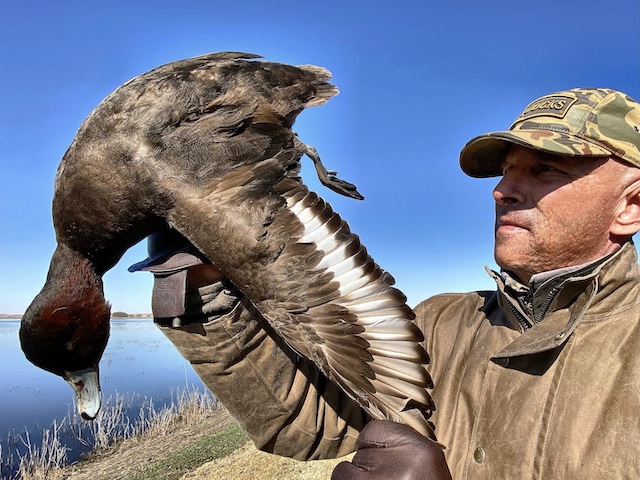 The southern pochard, while less flamboyant than its Netta counterparts, possesses a unique charm. Drakes exhibit a dark brown plumage complemented by a sky-blue bill and striking red eyes, features that become particularly noticeable upon closer observation. This species is commonly found across sub-Saharan Africa, favoring freshwater lakes and marshes.
The southern pochard, while less flamboyant than its Netta counterparts, possesses a unique charm. Drakes exhibit a dark brown plumage complemented by a sky-blue bill and striking red eyes, features that become particularly noticeable upon closer observation. This species is commonly found across sub-Saharan Africa, favoring freshwater lakes and marshes.
South Africa offers exceptional opportunities for hunting southern pochards. The country’s diverse aquatic habitats support healthy populations, and the hunting experience is often enriched by the presence of other unique African waterfowl species. Unlike their rosy-billed counterparts, especially, southern pochards are usually encoutered in singles, pairs, and sometimes small family groups. The southern pochard’s rapid flight and agile maneuvers present a rewarding challenge for hunters seeking to test their skills in new environments. This is an especially important note because the South African way of duck hunting oftentimes entails pass shooting at various distances while pitch-black night quickly ascends.
For dedicated waterfowlers, the quest for trophy species among the Netta genus transcends the act of hunting itself. It’s about immersing oneself in diverse ecosystems, understanding the behaviors and habitats of each species, embracing the cultural richness of the regions they inhabit. Hunting for the rosy-billed, red-crested, and southern pochards not only adds prized trophies to a hunter’s collection but also fosters deeper appreciation for the birds we chase and the environments they inhabit. Each expedition becomes a story woven with adventure, challenge, and the enduring allure of the wild. Know best part of gamebird hunting for those just getting started? They’re available nearly everywhere you’re likely already scheduled to hunt big game!
A long-time SCI Convention exhibitor and seminar speaker, Ramsey Russell founded GetDucks.com, chases waterfowl across 6 continents almost year-round, and hosts Duck Season Somewhere podcast. He subchairs SCI’s Gamebirds of the World Awards platform.

